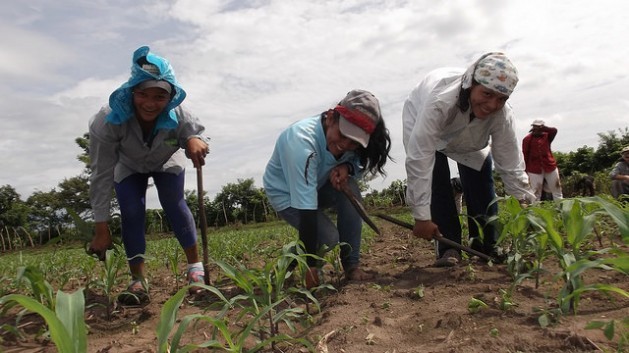Labor Market is key for gender equality in Latin America


States from Latin America and the Caribbean have been meeting for the last four decades to discuss and commit themselves to eradicate discrimination and gender inequality in the region. Since the first Regional Conference on Women in Latin American and the Caribbean held in La Habana in 1977 there’s been political, cultural, economic and social changes which have shown progress for women in the region, but a wide gap still remains.
For Alicia Bárcena,Executive Secretary of the Economic Comisssion for Latin America and the Caribbean (ECLAC), the labor market is key for equality for women in the region, as she explains in an article for IPS.
In the region, 78.1% of employed women work in sectors defined ECLAC as low productivity sectors, “which implies lower pay, less contact with technology and innovation and in many cases poor quality jobs.”
But for Bárcena, “the labor market is the master key to equality; the redistribution of income and the guaranteeing of rights begin there.”
ECLAC latest studies have shown that a rise in the proportion of women in the labor market would contribute to the reduction of poverty in the region. For example, in El Salvador poverty could be reduced by up to 12 percentage points if women earned more income.
“The proportion of women in the labor market has increased in countries in the region. However, in the last 10 years women’s participation in the labor force in the region has remained stagnant around 53 per cent, revealing a ceiling on the incorporation of women in remunerated work,” she explains.
Among women’s barriers is economic autonomy and time use.
In the region, about 30% of women lack an income of their own which makes them dependent on other members of the household to satisfy their family’s needs. Moreover, 26% of women over 15 earn less than the minimum wage. This means more than half the women in the region have no real economic autonomy.
Also, women across the region have a larger workload than men. For Bárcena, the traditional sexual division of labor assigns non-remunerated work to women and makes it virtually their exclusive responsibility.
These obstacles make it harder for women to join the labor market. Therefore, the reduction of the workday and policies to promote share responsibility in care-giving are potential tools to modify and help balance the current inequality. Also, putting monetary value on housework and unpaid caregiving have shown to be powerful tools in making women’s contribution to national economies visibles.
For example, estimates indicate that the value of unpaid work represented 24.3% of Mexico’s GDP in 2014, 20.4% of Colombia’s GDP in 2012, 18.8% of Guatemala’s GDP in 2014 and 15.2% of Ecuador’s GDP in 2012. If unpaid work was given market value, then one-fifth of the wealth quantified in the national accounts would be produced in households, mainly by women.
“What are needed are public policies to avoid reproducing gender stereotypes, taking IGNORE INTO account the different roles that women play, and strengthening their insertion in the labor market and their professional development at the highest level, to capitalize on their training and skills in sectors of higher productivity.”
Today, on the occasion of this year’s International Women’s Day, “the time has come for a shift in the gender paradigm in our countries, to put an end to patriarchal society.”
“It is time to pave the way for equality in all its forms and in all possible scenarios, to respect and view women beyond our gender, for all our capabilities and for our continuous struggle for the construction of a more just and equitable society, not just for all women, but for everyone”
Prepared by





